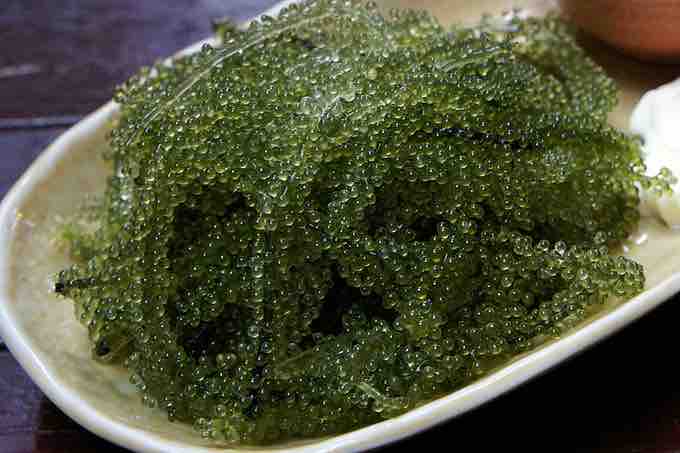Algae are a very diverse group of generally simple unicellular or multicellular eukaryotic organisms. Most of them are autotrophic which means that they can harvest carbon dioxide from the atmosphere and convert it to organic matter. They inherited their photosynthetic apparatus from cyanobacteria. Cyanobacteria are sometimes called blue-green algae but they are prokaryotic organisms and are not true algae. Some cyanobacterial species are used as food as well.
Seaweeds are edible algae that have been used for centuries as food in many coastal regions all over the world. They may belong to one of three groups of multicellular algae: red, green or brown. In countries such as China, Japan, Korea and to some extent Iceland, Ireland, Chile and New Zealand algae are part of people's regular diet. They are usually of marine origin since freshwater algae are often poisonous.
Algae are of excellent nutritional value since they contain complete protein (in contrast to plant food harvested on land), fiber, and sometimes high levels of omega-3 fatty acids. In fact, the omega-3 acids in fish comes from the microalgae consumed at the bottom of the food pyramide and gradually passed up to the fish at the top. Algae are also rich in many vitamins, such as A, C, B1, B2, B3 and B6, as well as minerals, such as iodine, calcium, potassium, magnesium and iron. They are consumed both cooked, dried and raw .

Sea grapes
Sea grapes (Caulerpa lentillifera) is a type of seaweed consumed raw as a salad or snack
Cultivated microalgae and cyanobacteria such as Spirulina and Chlorella are sold as nutritional supplements. Hydrocolloids such as agar, alginate and carrageenan are isolated from wild and cultivated algae and used as additives in the food industry for their emulsifying and thickening properties. Some of the complex polysaccharides found in algae may be digested by bacteria in the gut since the needed enzymes for digestion are abundantly present in Japanese people but absent in people from North America.